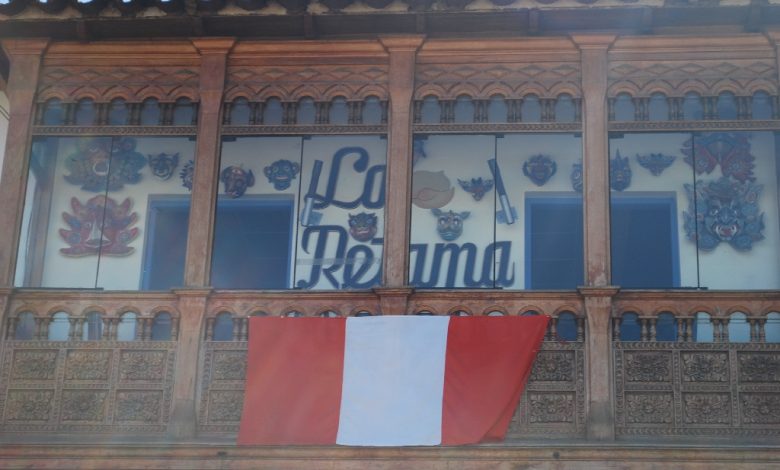Mistura and the “Mystery” of Peruvian Gastronomy

The powerful annual food festival Mistura is in full swing today in Lima. Begun in 1998 and still sponsored by APEGA, the Peruvian Society for Gastronomy (Sociedad Peruana de Gastronomía), Mistura has been an important instrument for creating the buzz around Peruvian cuisine both inside and outside the country. In Peru it is widely reported in international media, as food increasingly becomes a spectator sport, and it has drawn this year one of the world’s great chefs, who himself created a food revolution in his country, Ferrán Adrià of Spain, creator of el Bulli.
Mistura is a big event. Besides local visitors in Peru´s capital and largest city, Mistura alone is expected to draw as many as 4,000 foreign tourists. There, people can try food from throughout the country. From Cuzco, the event has invited El Pisquerito as well as Huacatay from the nearby Sacred Valley. Cuzco’s young, master bread maker, Wilfredo Mamani Mayhuire will also be there to demonstrate his art with, among other things, his huacatay bread, using the indigenous herb also called “black mint“.
Called the Messi of bread, in an allusion to the Barcelona Soccer legend, Mamani is considered on of the the fifty best bread makers in the world because of his performance in the 2008 Louis Lesaffre Cup, the World Cup of baking.
Mamani is young, only twenty-five years old. Like many Cuzqueños, he came to the city from the countryside; he does not yet have a web page unlike the two restaurants also chosen to represent Cuzco. Mamani is from the Acopía District in Acomayo Province. He gained his breadmaking skills while working in the urban neighborhood of San Blas, a tourist favorite. In 2006 he won Cuzco’s and then the Peruvian Bread Championship.
Though attaining fame, Mamani lives with his wife and two children in a humble home in the neighborhood of Ayuda Mútua near Sacsayhuaman.

While Cuzco can be proud of its representation in the festival, Mistura is also about the promotion of pride in the cuisine of Peru as a whole. As Hugo Guerra noted in the eminent newspaper El Comercio on Saturday, the boom in Peruvian cuisine–and its diversity– is intimately connected with Peruvian national pride.
This may well be something that Ferrán Adrià meant when he said to interviewers “I want to understand why cuisine here is more than cooking, which is what makes this country unique in the world.”
I find it intriguing that food, particularly a cuisine whose boundaries are not exactly the same as those of the nation, since similar foods are often found in other countries. This can lead to lots of debates and conflict about who owns what. But the history, the people, and the networks that make food are simply not the same as those that make a country.
Nevertheless, for many of us, food is often branded as somehow part of a nation and its essential reality. That is the way we find restaurants and cuisines marketed on the streets and television of any one of the industrial countries of the world. They carry a name, such as “Mexican”, “Chinese”, “Korean”, “Italian”, often with the strange adjective “authentic”.
This branding seems to require the complex cuisines of those places be reduced to just a few dishes which then are codified in ingredients and taste at the same time they are transformed to fit the taste of their international clients, rather than those of their ostensible home.
Peru, with its Peru trademark and its push to have Peruvian cuisine recognized by UNESCO as part of the heritage of humanity has launched itself into this world where cuisines are like a sauce reduced over the international flame. But as Adrià’s observation hints, it hopes to be different.
In fact, the presence of Adriá points to some of the difference. Peruvian gastronomy is not simply about a cuisine that is part of the inherent spirit of country. If that were the case food would be like folk dance with a horde of students scattered over the country searching out all the different combinations of ingredients and varieties of dishes to recast and re-present in the new form of an auditorium with a stage–I mean restaurant with a chef.
Well, that is part of what is going on. But there is more. And, this is the importance of Adriá’s visit to Peru and Mistura.
Adriá carried out a revolution in food that both broke the frame of Nouvelle Cuisine in Europe and the idea that a cuisine is inherently tied to place in ways that go far beyond the origin place of ingredients. At the same time Adriá performed a technical revolution in the conception and preparation of what is considered food. He expanded the definition by breaking the constraints.
While Mistura emphasizes the geography of Peru and its relationship with food, it also recognizes the growing place of formally trained chefs who make technical innovations. In this they are following after the revolution carried out by Adriá. But, there is also the hope that they may move beyond.
The Peruvian revolution, and what may fulfill the hopes of making Lima the gastronomic center of South America, depends on the strong tie that Mistura and its press attempt to maintain between the genius of creative chefs and the nation that produced them.
The canon of Peruvian food–which is in the process of being formalized–will not be the limit nor the defining point of what constitutes Peruvian cuisine. Rather Perú’s elite hope that it will be the connection of its people to international celebrity cuisine–the domain occupied by Fernán Adrià– where Peruvian born and trained chefs may make their mark.
The heritage of the country with its diverse ethnic cuisines and ecological variation in ingredients the would be but a small part of a library from which they can draw to create, endlessly create, and make a desired difference in the world which will be labeled Peru.




